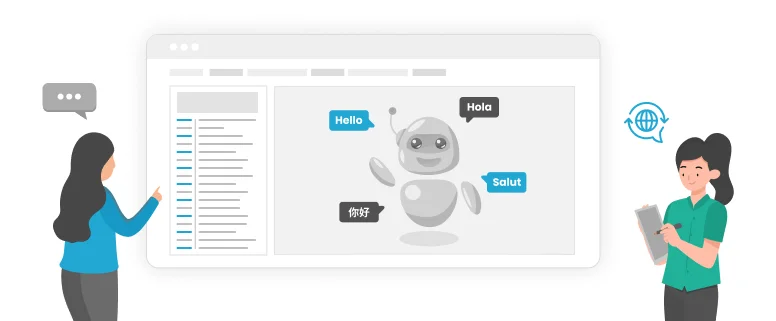Language is the blood of every community. It seeps deep and flows in the veins of economy, society, hence it’s impossible to even imagine a country without it.
So whatever makes you think a business can survive with it? Times have proved often with rapid change in technology, how efficient working on the internet is becoming these days. The brand is being promoted online and hence the convenience it has provided to people, makes a brand more globally awarded.
Why Localize a Software?
When it comes to translation and localization, you are taking a Generation Y step towards the market by entering the market of millennials. The foremost thing you can do as a millennial providing is a software localization service is to adapt according to the change. Promoting your brand and services, is yet another of successful marketing strategies something that is becoming more prominent and credible for businesses involved globally.
Planning? Yes!
Software localization can’t be left pending for the last-minute idea. That will be starting at the wrong foot, something you need to avoid as a business entity.
Plan the software localization when engaged in planning the product placement strategy. In the future, you are sure enough to expand online so why not plan your website accordingly? Localization is a time taking process, i.e. you need to understand the local market culture and language to target the right set of audiences.
Do the primary research required, testing the translation and themes for localization of your services.
1, 2, 3…Testing!
A very common step to take. And hence the most precautionary one as well. Each software should be tested rigorously. Localizing testing may seem crucial in the beginning but it will prove the extent of website functionality as well.
Hijacking the software at the initial stage is a keen decision but testing it before putting it to work will save you extra expenses. Look for the context of translated content, proofread every material and make aqueduct changes required. You want localization to be more natural rather than proving to be challenging for the customer to engage with.
Test Your Translation Tools:
There are automated translation tools that many tech-savvy businesses rely on. A common mistake that you as a software service provider needs to avoid. Testing the software is closely associated with generating translation samples for any number of ongoing projects. Test the translation software tools by proofreading the changes manually. Using a semi-automatic translation tool is more convenient at this point, you will learn the desired way of progress eventually.
And when you choose the right tool, always leave space for the addition of more languages with time. That will leave ample space to include changes with time.
Internalize Your Software:
Work smartly when it comes to software localization. Your software must be localized in the way that won’t require, coding at every change when required. Keep separate folders for every localized source; either it’s an image, string texts, sound files, etc. Maintaining a proper structure is a wise way to organize your initial workings.
Keeping a backup of the original language is helpful in the prospect of any loss in the future. It will keep your next-generation data intact in the main server that can be further localized with each language.
Start by launching a Product Page:
Taking initiative internationally requires big-time budget and planning. If your services are thriving in your market, doesn’t necessarily mean it will be the same for an international market. To avoid the mishap in any case, why not start by launching a product page only at first, targeting the niche market?
If you are interested to expand globally, then launching a product page is just what you need to take the initial risk. Localize the brand or services, and configure out how successful the experiment can be.
Hiring local experts is a “Thing”:
When testing international waters, you have to be sure that whatever you do, it doesn’t seem offensive to people. Some phrases are often offensive o other cultures, either a color, remarks or a slogan, anything can spark a disengagement. Becoming aware of the culture difference is the first baby step that needs to be taken. Like in some countries, Friday is a local holiday while in some new week starts from every Sunday (instead of Monday) and so on.
By hiring local experts, you are franchising not only your services but also your software localization services as well.
Read Also: The Promise, Progress and Pain Of Collaboration Software
Keep Check and Balance:
Pseudo localization is an integral part, helping you with the internationalization issues and helps to identify these issues in translation before it can take place. Either it’s a code string or an unsupported character etc. potential issues can be allocated by taking this step.
As crucial as it may sound, localization is an intriguing way of upgrading your brand image and services as well.
Take a look at how we helped our client by localizing their project for Software Localization & Translation Industry. Click here to read the complete case study



